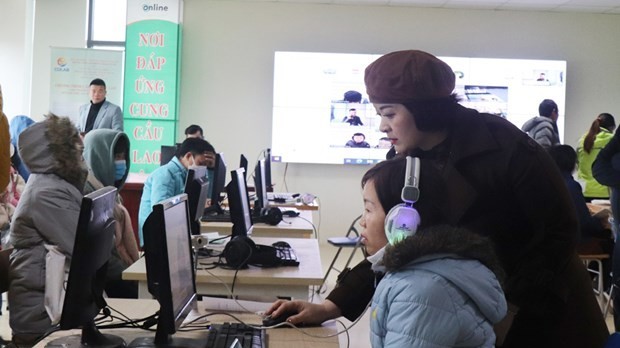
Service sector's personnel demand forecast to soar in early 2022
Latest
 |
| Financial and banking enterprises are seeking to fill many IT and sales positions. (Photo: VNA) |
According to Pham Thi Hoai Linh, Human Resources Director at Navigos Group, fast-moving consumer goods (FMCG) businesses have just experienced a challenging year due to the impact of the COVID-19 pandemic. Therefore, in the first quarter of 2022, the recruitment demand in this field is bustling again as businesses begin to use their new budget sources, she said.
Linh observed that financial and banking enterprises are seeking to fill many IT and sales positions.
The information and telecommunication technology sector is also expected to have a big demand for competent personnel in artificial intelligence (AI), Big Data, Crypto and Blockchain. However, the supply of human resources for these fields is limited, leading to fierce competition between businesses, added Linh.
In particular, Navigos Research predicted that recruitment in the industrial and resort real estate would increase sharply in the first six months of this year.
The Centre of Forecasting Manpower Needs and Labor Market Information of Ho Chi Minh City said that the city would need around 255,000 to 310,000 workers in 2022 based on the pandemic situation.
In the scenario of the pandemic developing complicatedly, affecting socio-economic growth, there will be around 255,000 to 280,000 vacant jobs. The recruitment demand for the first quarter is 71,500-78,500; 59,600-65,500 for the second; 60,600-66,500 for the third; and 63,300-69,500 for the fourth quarter.
In case the pandemic is put under control, the largest economic hub of Viet Nam will need around 280,000 to 310,000 laborers. Of which, the city will be likely to lack around 78,500 to 86,900 workers, 65,500 to 72,500, 66,500 to 73,500 and 69,500 to 77,100 people in the first, second, third and fourth quarters, respectively.
The demand for trained employees will account for over 86 percent. Of which, the need for those holding tertiary degrees would account for 20.74 percent.













